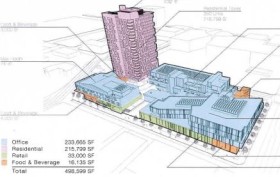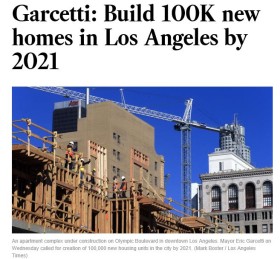If there ever was a reason for the State Department of Water Resources to vet UWMPs that are submitted to it, this should be one of them. For 30 years, the Los Angeles Department of Water and Power’s practice of reporting water that it can't access has undermined public transparency, making it appear that the city water supply was well situated for growth. The city’s long, persistent drought is a result of this activity. Allowing utilities (LADWP is not alone) to report access to water they have no access to makes a mockery out of the so-called ‘Show Me the Water Laws’ and the State's water laws in general.
The practice threatens water supply because once development is permitted using fictitious future supply data, the predictable shortages appear which have to be followed by hard choices when other equally important users feel the impact and assert their rights. Who should make the sacrifice? Agriculture? Fish? Hydropower? The environment? Perhaps we should connect growth with water and make the cuts there.
Urban Water Management Plans should be clear and easy to understand and accessible to the public. When shortages are projected, the UWMP should also offer enough detail to decision makers and the public what the economic costs and access to water will be if development continues over the 20 year lifetime of the plan. More important than knowing there will be 611,800 AF/y in 2020, residents should be advised on how it will affect their monthly allocations and how much higher their billing costs will go up.
Today's Urban Water Management Plans are written in wonkish, 'members only' style that excludes public participation in its formation and approval of the document. The style also excludes the public from the planning process where it is ultimately used. I know that many planners and decision makers don't understand the document. They instead look to the singular paragraph in the EIR that says...
This needs to change.

 The two projects that apparently passed muster are the 250 unit
The two projects that apparently passed muster are the 250 unit

 The main beneficiary of the reduced demand would be the Metropolitan Water District since the city would be buying less water from the agency each year. If the MWD could store this water and build up reserves that would be a good thing for all. However it will most likely will be a combination of storing some of the water and selling the rest to its other member agencies.
The main beneficiary of the reduced demand would be the Metropolitan Water District since the city would be buying less water from the agency each year. If the MWD could store this water and build up reserves that would be a good thing for all. However it will most likely will be a combination of storing some of the water and selling the rest to its other member agencies.
 Cities throughout California, particularly Southern California need to re-assess their plans for growth and throw away their compliance for bad laws like SB 1818 and housing policies like
Cities throughout California, particularly Southern California need to re-assess their plans for growth and throw away their compliance for bad laws like SB 1818 and housing policies like